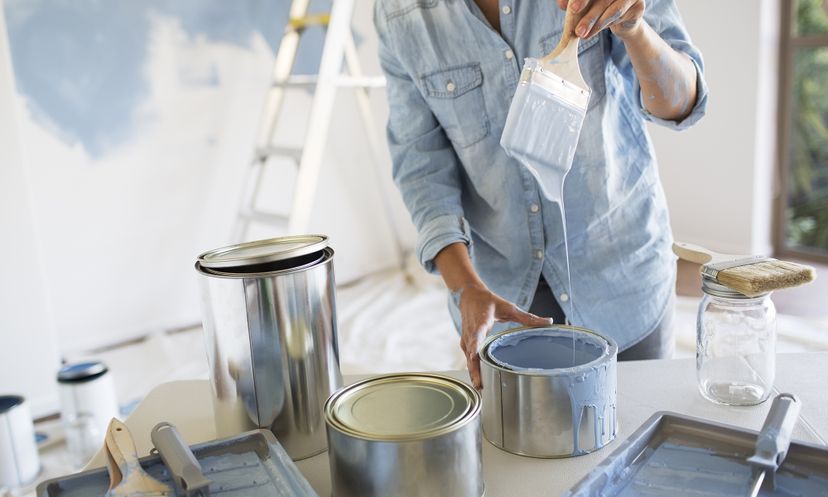
About This Quiz
Couches are major players in home habitats -- often, they're the largest piece of furniture in a room. As such, they're definitely worth considering when you start revamping interior paint schemes. But how can you tell if you're on the right track in picking out the best shades of paint to accent your couch? Try this quiz to find out if you can trust your inner designer.All of these elements might eventually come into play depending on your particular situation. But if possible, it's best to start out by figuring out what kind of look and feel you ideally want for the room -- whether that's modern, eclectic, traditional or something else. Not only will this help point you in the right color combination direction, it should also help to ensure that you're satisfied with the end result.
A neutral couch goes well with almost any paint color -- except another neutral close to its own color. If the wall color is an exact match, you run the risk of having your sofa "get lost" in its surroundings. If you really want to stay in the neutral family of colors, try to go at least two or three shades darker than the couch fabric. Otherwise, you could use this as an opportunity to incorporate some warmth by painting the wall a vibrant orange, or create a cool effect by choosing a blue or green hue.
Known as complementary, adjacent and triad approaches, respectively, all three of these methods are regularly used by professional interior designers in the color selection process. Do-it-yourself enthusiasts can easily use them as well.
Advertisement
If you have a patterned piece of furniture anchoring a space, interior designers often recommend choosing three colors from the print to use as your overall scheme for the room. Any one of these colors could be used for the wall, depending on your personal preference.
According to the experts at Better Homes and Gardens, choosing any of these paint colors should help keep the temperature of the room feeling fresh as opposed to chilly and sterile.
As leather couches are often come in dark colors, such as deep brown or black, setting them against dark hues can give a room a cave-like feeling and make the space feel smaller. You can get away with a darker wall, however, if your textured couch is a lighter color, such as creamy white or beige.
Advertisement
Red is a certainly strong color choice for a couch, but it's by no means an impossible one. Just allow it to play center stage and choose a more neutral backdrop for the walls, such as a taupe, gray or even light yellow.
With the exception of orange and purple, all of these combinations are considered to be complementary, because they're opposite each other on the color wheel, and they comprise both a cool and warm shade. Complementary colors can be a helpful guide when you're picking a paint color to go with your couch. For example, if you have a deep violet sofa, you can make it pop by painting the walls a soft, buttery yellow.
This approach can work especially well if your couch is a neutral color (such as beige or cream) and you choose a bold paint color for the single wall, then set the couch in front of it. If you're starting with a couch that's a bright color, such as royal blue or kelly green, take the opposite approach and keep the accent wall color neutral to achieve the same framing effect.
Advertisement
Known as a monochromatic approach, doing this can give your room the illusion of more light, if you choose a tint that's from the same color family as your sofa but slightly paler. You can also leverage a space that already has a lot of windows by opting for a darker shade on the spectrum for the walls, which should draw attention to the source letting in the natural light. To take this approach a step further, choose accent pieces, such as throw pillows or framed art, that include patterns containing the main wall color.